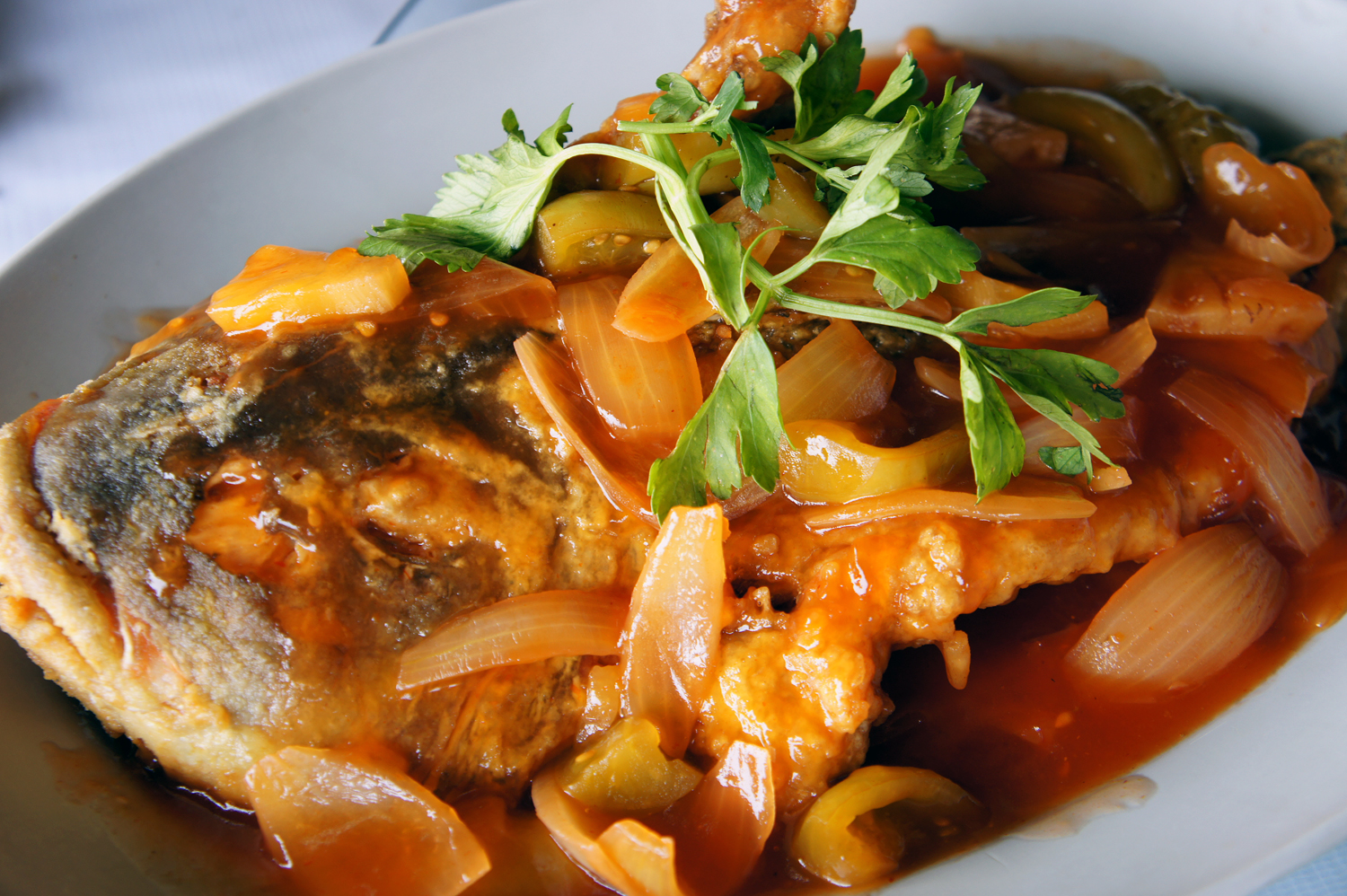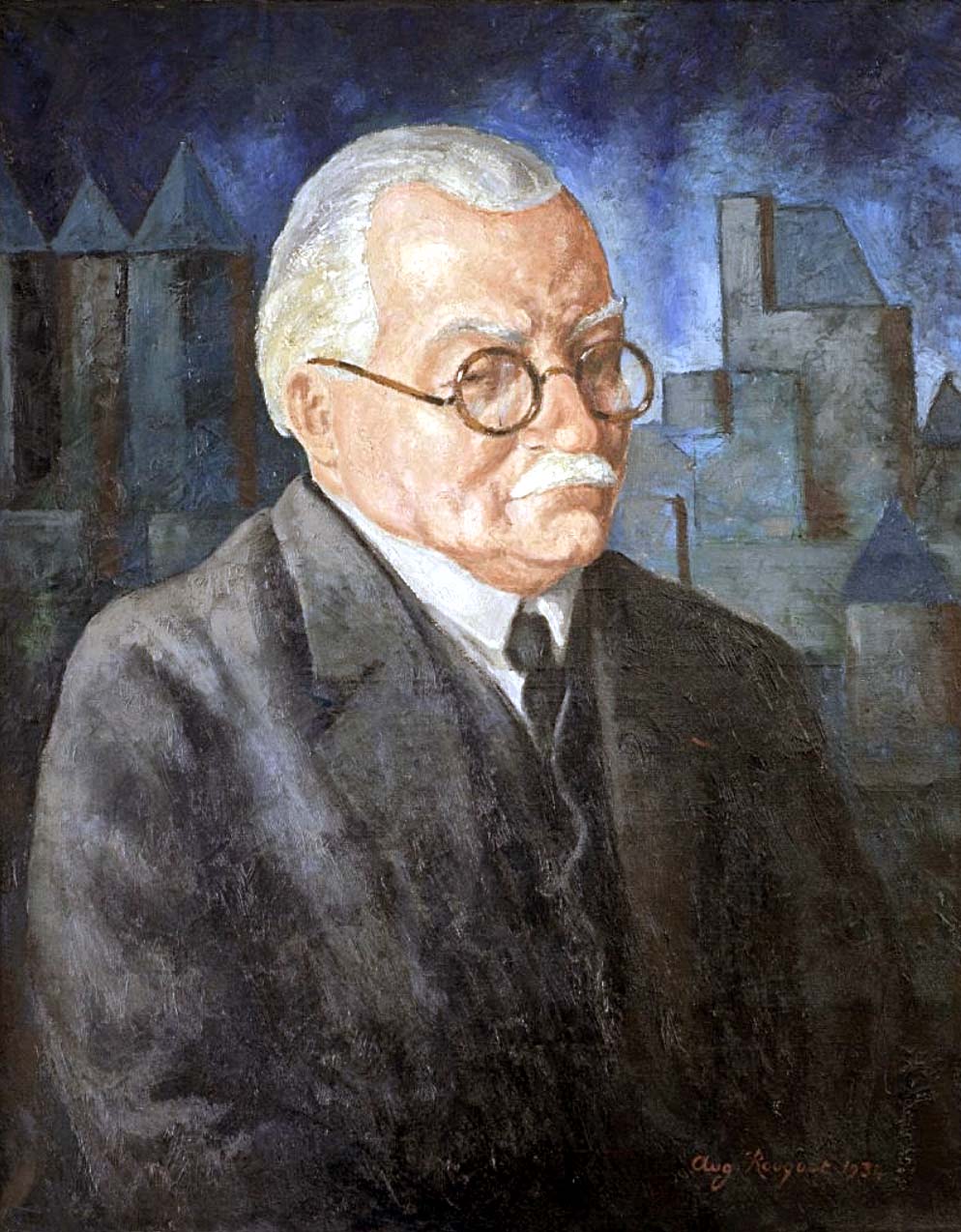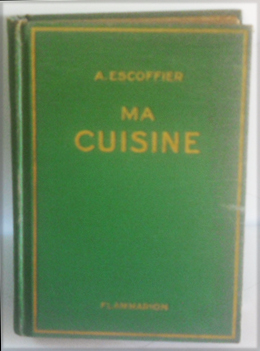|
Gastrique
Gastrique is caramelized sugar, Deglazing (cooking), deglazed with vinegar or other sour liquids, used as a sweet and sour flavoring for sauces. The gastrique is generally added to a fond, Reduction (cooking), reduced stock (food), stock or Brown sauce (meat stock based), brown sauce. It is also used to flavor sauces such as tomato sauce, savory fruit sauces, and others, such as the orange sauce for duck à l'orange. The term is often broadened to mean any sweet and sour sauce, e.g., citrus ''gastrique'' or mango ''gastrique''. An ''agrodolce'' is a similar sauce found in Italian cuisine. It is different from the Belgian sauce base of the same name, which consists of vinegar, white wine, shallots, tarragon, tarragon stems, bouquet garni, and peppercorns. The gastrique with this composition was already used by Auguste Escoffier, but at the end of the 19th century, Louis Védy from Brussels turned it into a plant extract that ensures a constant level of acidity when making béarnai ... [...More Info...] [...Related Items...] OR: [Wikipedia] [Google] [Baidu] |
Sweet And Sour
Sweet and sour is a generic term that encompasses many styles of sauce, cuisine, and cooking methods. It is commonly used in East Asia and Southeast Asia and has been used in English cuisine, England since the Middle Ages.Clarissa Dickson WDickson Wright, Clarissa (2011) ''A History of English Food''. Random House. . Pages 52–53 Sweet and sour sauce remains popular in Asian and Western cuisines. By region East Asia Chinese cuisine Sweet and sour dishes, sauces, and cooking methods have a long history in China. One of the earliest recordings of sweet and sour may come from ''Shaowei Yanshi Dan'' (), a menu of the food served in Tang dynasty (618–907) "Shaowei banquet" festivals written in 708. It included many sweet and sour adjacent dishes and recorded that they were invented by Chancellor Wei Juyuan under Emperor Zhongzong of Tang when he hosted the Emperor at his house. Some authors say that the original sweet and sour sauce () came from the Province (China), Chinese provinc ... [...More Info...] [...Related Items...] OR: [Wikipedia] [Google] [Baidu] |
Sauce
In cooking, a sauce is a liquid, cream, or semi- solid food, served on or used in preparing other foods. Most sauces are not normally consumed by themselves; they add flavour, texture, and visual appeal to a dish. ''Sauce'' is a French word probably from the post-classical Latin ''salsa'', derived from the classical ''salsus'' 'salted'. Possibly the oldest recorded European sauce is garum, the fish sauce used by the Ancient Romans, while doubanjiang, the Chinese soy bean paste is mentioned in '' Rites of Zhou'' 20. Sauces need a liquid component. Sauces are an essential element in cuisines all over the world. Sauces may be used for sweet or savory dishes. They may be prepared and served cold, like mayonnaise, prepared cold but served lukewarm like pesto, cooked and served warm like bechamel or cooked and served cold like apple sauce. They may be freshly prepared by the cook, especially in restaurants, but today many sauces are sold premade and packaged like Worce ... [...More Info...] [...Related Items...] OR: [Wikipedia] [Google] [Baidu] |
Reduction (cooking)
In cooking, reduction is the process of thickening and intensifying the flavor of a liquid mixture, such as a soup, sauce, wine or juice, by simmering or boiling. Reduction is performed by simmering or boiling a liquid, such as a stock, fruit or vegetable juice, wine, vinegar or sauce, until the desired concentration is reached by evaporation. This is done without a lid, enabling the vapor to escape from the mixture. Different components of the liquid will evaporate at slightly different temperatures, and the goal of reduction is to drive away those with lowest points of evaporation. While reduction does concentrate the flavors left in the pan, reducing too much will decrease the amount of all liquid in the sauce, leaving a sticky, burnt coating on the pan. Sauces, ranging from basic brown sauce to béchamel sauce and even tomato sauce, are simmered for long periods (from 1 to 10 hours) but not boiled. Simmering not only develops the maximum possible flavor, but also allows i ... [...More Info...] [...Related Items...] OR: [Wikipedia] [Google] [Baidu] |
Agrodolce
Sweet and sour is a generic term that encompasses many styles of sauce, cuisine, and cooking methods. It is commonly used in East Asia and Southeast Asia and has been used in England since the Middle Ages.Clarissa Dickson WDickson Wright, Clarissa (2011) ''A History of English Food''. Random House. . Pages 52–53 Sweet and sour sauce remains popular in Asian and Western cuisines. By region East Asia Chinese cuisine Sweet and sour dishes, sauces, and cooking methods have a long history in China. One of the earliest recordings of sweet and sour may come from ''Shaowei Yanshi Dan'' (), a menu of the food served in Tang dynasty (618–907) "Shaowei banquet" festivals written in 708. It included many sweet and sour adjacent dishes and recorded that they were invented by Chancellor Wei Juyuan under Emperor Zhongzong of Tang when he hosted the Emperor at his house. Some authors say that the original sweet and sour sauce () came from the Province (China), Chinese province of Henan, but t ... [...More Info...] [...Related Items...] OR: [Wikipedia] [Google] [Baidu] |
Scallop - Tangerine-gastrique
Scallop () is a common name that encompasses various species of Marine (ocean), marine bivalve mollusc, molluscs in the Taxonomy (biology), taxonomic Family (biology), family Pectinidae, the scallops. However, the common name "scallop" is also sometimes applied to species in other closely related families within the superfamily Pectinoidea, which also includes the thorny oysters. Scallops are a Cosmopolitan distribution, cosmopolitan family of bivalves found in all of the world's oceans, although never in fresh water. They are one of the very few groups of bivalves to be primarily "free-living", with many species capable of rapidly swimming short distances and even migrating some distance across the ocean floor. A small minority of scallop species live cemented to rocky substrate (biology), substrates as adults, while others attach themselves to stationary or rooted objects such as seagrass at some point in their lives by means of a filament they secrete called a byssal thread. ... [...More Info...] [...Related Items...] OR: [Wikipedia] [Google] [Baidu] |
Bouquet Garni
The ''bouquet garni'' ( French for "garnished bouquet"; ) is a bundle of herbs usually tied with string and mainly used to prepare soup, stock, casseroles and various stews. The bouquet is cooked with the other ingredients and removed prior to consumption. Liquid remaining in the bouquet garni can be wrung out into the dish. There is no standard recipe for ''bouquet garni'', but most French recipes include thyme, bay leaf and parsley. It may also include basil, burnet, chervil, rosemary, peppercorns, savory and tarragon. Vegetables such as carrot, celery (leaves or leaf stalks), celeriac, leek, onion and parsley root are sometimes included in the ''bouquet''. Sometimes, the ''bouquet'' is not bound with string, and its ingredients are filled into a small sachet, a piece of celery stalk, a net, or a tea strainer instead. Traditionally, the aromatics are bound within leek leaves, though a cheesecloth, muslin or coffee filter tied with butcher twine can be used. ''Sachet ... [...More Info...] [...Related Items...] OR: [Wikipedia] [Google] [Baidu] |
Prosper Montagné
Prosper Montagné (; 14 November 1865 – 22 April 1948) was one of the most renowned French chefs of the Belle Époque and author of many books and articles on food, cooking, and gastronomy, notably '' Larousse Gastronomique'' (1938), an encyclopedic dictionary of the French culinary arts. While Montagné was once as famous as his friend Auguste Escoffier, and was one of the most influential French chefs of the early twentieth century, his fame has faded somewhat. In the 1920s, Montagné, Escoffier, and Philéas Gilbert—their close friend and collaborator, and an acclaimed chef and writer in his own right—were the French chefs and culinary writers esteemed above others by many French journalists and writers. After Montagné's death, the chef and author Alfred Guérot's description of the troika as the "celebrated contemporary culinary trinity: Auguste Escoffier, the father; Philéas Gilbert, the son; Prosper Montagné, the spirit" reflects the reverence in which all three were ... [...More Info...] [...Related Items...] OR: [Wikipedia] [Google] [Baidu] |
Le Guide Culinaire
''Le Guide Culinaire'' () is Georges Auguste Escoffier's 1903 French restaurant cuisine cookbook, his first. It is regarded as a classic and still in print. Escoffier developed the recipes while working at the Savoy, Ritz and Carlton hotels from the late 1880s to the time of publication. The hotels and restaurants Escoffier worked in were on the cutting edge of modernity, doing away with many overwrought elements of the Victorian era while serving the elite of society. History The first edition was printed in 1903 in French, the second edition was published in 1907, the third in 1912, and the current fourth edition in 1921. Many of the recipes Escoffier developed while working at the Savoy in London, and later the Ritz in Paris. He kept notes on note cards. Recipes were often created and named for famous patrons including royalty, nouveaux riches, and artists. After leaving the Savoy in 1898, he began work on the book. Usage and style The original text was printed for the use ... [...More Info...] [...Related Items...] OR: [Wikipedia] [Google] [Baidu] |
Escoffier
Georges Auguste Escoffier (; 28 October 1846 – 12 February 1935) was a French chef, restaurateur, and culinary writer who popularised and updated traditional French cooking methods. Much of Escoffier's technique was based on that of Marie-Antoine Carême, one of the codifiers of French ''haute cuisine''; Escoffier's achievement was to simplify and modernise Carême's elaborate and ornate style. In particular, he codified the recipes for the five mother sauces. Referred to by the French press as ''roi des cuisiniers et cuisinier des rois'' ("king of chefs and chef of kings"—also previously said of Carême), Escoffier was a preeminent figure in London and Paris during the 1890s and the early part of the 20th century. Alongside the recipes, Escoffier elevated the profession. In a time when kitchens were loud, riotous places where drinking on the job was commonplace, Escoffier demanded cleanliness, discipline, and silence from his staff. In bringing order to the kitchen, he t ... [...More Info...] [...Related Items...] OR: [Wikipedia] [Google] [Baidu] |
Béarnaise Sauce
Béarnaise sauce (; ) is a sauce made of clarified butter, egg yolk, white wine vinegar, and herbs. It is regarded as a "child" of hollandaise sauce. The difference is in the flavoring: béarnaise uses shallot, black pepper, and tarragon, while hollandaise uses white pepper or a pinch of cayenne. The sauce's name derives from the province of Béarn, France. It is a traditional sauce for steak. Escoffier: 89 History According to a common explanation, the sauce was accidentally invented by the chef Jean-Louis-François Collinet, the accidental inventor of puffed potatoes (''pommes de terre soufflées''), and served at the 1836 opening of Le Pavillon Henri IV, a restaurant at Saint-Germain-en-Laye. The restaurant was in the former residence of Henry IV of France, a gourmet himself, who was from Béarn. Although the sauce is a French invention, it became popular in the Nordic countries in the late 20th century, where it forms a major part of local steak cuisine with steaks and ... [...More Info...] [...Related Items...] OR: [Wikipedia] [Google] [Baidu] |
Brussels
Brussels, officially the Brussels-Capital Region, (All text and all but one graphic show the English name as Brussels-Capital Region.) is a Communities, regions and language areas of Belgium#Regions, region of Belgium comprising #Municipalities, 19 municipalities, including the City of Brussels, which is the capital of Belgium. The Brussels-Capital Region is located in the central portion of the country. It is a part of both the French Community of Belgium and the Flemish Community, and is separate from the Flemish Region (Flanders), within which it forms an enclave, and the Walloon Region (Wallonia), located less than to the south. Brussels grew from a small rural settlement on the river Senne (river), Senne to become an important city-region in Europe. Since the end of the Second World War, it has been a major centre for international politics and home to numerous international organisations, politicians, Diplomacy, diplomats and civil servants. Brussels is the ''de facto' ... [...More Info...] [...Related Items...] OR: [Wikipedia] [Google] [Baidu] |






